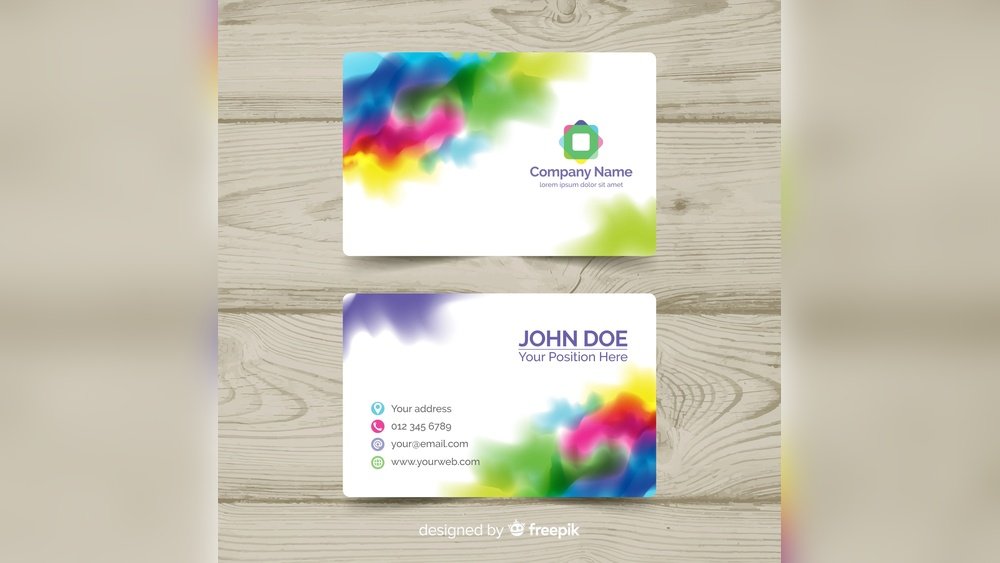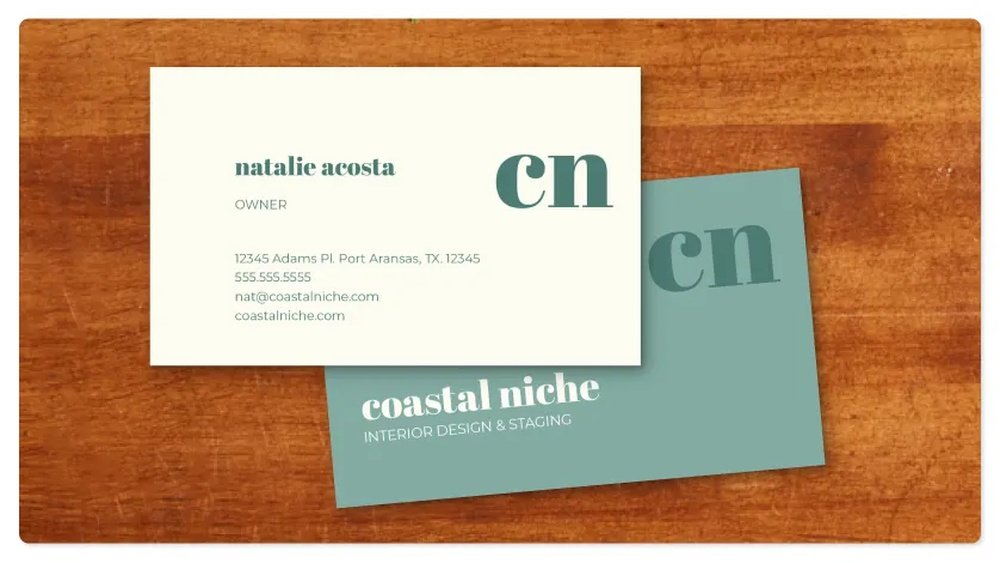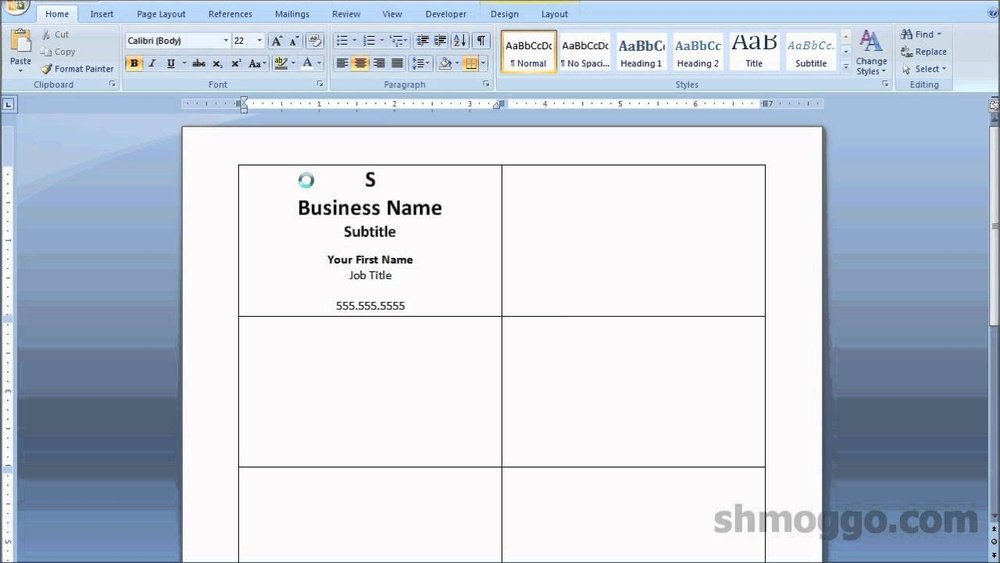Your visiting card is more than just a piece of paper—it’s a powerful tool that speaks for you before you even say a word. If you want to leave a lasting impression, your card needs to stand out from the crowd.
But how do you make sure your card gets noticed and remembered? This article is packed with creative visiting card printing ideas that can make your card unique, professional, and impossible to forget. Keep reading, and discover how to turn your simple card into a smart marketing asset that works for you every time you hand it out.
Design Styles
Design style shapes the first impression of your visiting card. It shows your personality and business image. Choosing the right style helps your card stand out. It also makes it easier for others to remember you. Let’s explore popular design styles for visiting cards that suit different tastes and needs.
Minimalist Concepts
Minimalist designs focus on simplicity and clarity. They use few colors and clean lines. Text is easy to read with plenty of white space. This style feels modern and professional. It works well for creative fields and tech businesses. Minimalist cards avoid clutter and highlight key details.
Bold And Vibrant
Bold styles use bright colors and strong contrasts. They attract attention quickly and show energy. Fonts are often large and clear. This style fits brands that want to appear fun and lively. It helps your card stand out in a stack. Vibrant cards leave a memorable visual impact.
Vintage Looks
Vintage designs bring old-fashioned charm and warmth. They use muted colors and classic fonts. Details like borders and textures add character. This style suits handmade products, cafes, and boutique shops. Vintage cards feel personal and inviting. They suggest trust and tradition.
Modern Geometric
Geometric styles use shapes like circles, squares, and triangles. They create balance and structure on the card. Colors are often bright or monochrome. This style fits industries like architecture and design. Geometric cards look clean and stylish. They give a sense of order and creativity.

Credit: www.freepik.com
Material Choices
Choosing the right material for your visiting card is key. It affects the card’s feel, look, and durability. Different materials suit different styles and budgets. The material also helps your card stand out or stay classic. Consider what fits your brand and message.
Classic Paper
Classic paper is the most common choice for visiting cards. It feels smooth and professional. You can pick from different weights and finishes. Matte or glossy options give a clean look. Paper cards are easy to write on. They work well for any business or personal use.
Recycled Options
Recycled paper is great for eco-friendly cards. It shows you care about the environment. These cards often have a natural, rough texture. They can look rustic or modern. Using recycled materials can make your card memorable. It fits brands with green values.
Plastic And Metal
Plastic cards are strong and water-resistant. They last longer than paper cards. Clear or colored plastic adds a modern touch. Metal cards feel heavy and very durable. They create a luxury impression. These materials suit special occasions or premium brands.
Textured Finishes
Textured finishes add depth and interest to cards. Linen, embossed, or felt textures create a unique touch. They invite people to feel the card’s surface. Textures make simple designs look elegant. These finishes help your card feel special and stand out.
Creative Layouts
Creative layouts make visiting cards stand out. They give space to express your brand and personality. A smart design grabs attention and stays in memory. Different styles serve different purposes and industries. Explore unique formats to make a strong first impression.
Double-sided Designs
Double-sided cards offer twice the space for information. Use one side for your logo and name. Reserve the other side for contact details or a tagline. This layout keeps the card neat and organized. It allows clear, simple communication without clutter.
Folded Cards
Folded cards add a surprise element to your design. They open like a mini brochure, showing more content. Use inside space for services, a quote, or a map. Folded cards feel special and professional. They give you room for extra details without crowding.
Die-cut Shapes
Die-cut shapes break the usual rectangle mold. Create cards in circles, squares, or custom shapes. Unique edges catch the eye and feel different. Shapes can reflect your brand style or industry theme. These cards invite people to hold and keep them longer.
Interactive Elements
Interactive cards invite touch and play. Include QR codes linking to websites or videos. Use pull-out tabs or pop-ups for fun effects. These features engage people and make your card memorable. Interactive elements connect offline and online worlds easily.

Credit: www.luxuryprinting.com
Typography Tips
Typography plays a big role in visiting card design. It helps share your message clearly. The right fonts make your card look professional and easy to read. Poor typography can confuse or turn away potential contacts.
Focus on choosing fonts and styles that fit your brand. Balance creativity with clarity. These tips will guide you on how to use typography effectively.
Font Pairing
Use two fonts maximum to keep the card clean. Combine a bold font with a simple one. For example, pair a serif font with a sans-serif font. This contrast creates visual interest. Avoid using fonts that look too similar. It can make your card seem cluttered.
Readability Focus
Make sure the text is easy to read. Choose font sizes that are not too small. Avoid fancy or decorative fonts for important details. Leave enough space between letters and lines. This helps the eyes move smoothly. Clear text builds trust with your audience.
Custom Lettering
Custom lettering adds a unique touch to your card. It can reflect your personality or brand style. Use it for names or logos to stand out. Keep custom fonts simple and not too detailed. Too much detail can make text hard to read on small cards.
Using Color Effectively
Color affects how people see your text. Use dark text on a light background for best clarity. Avoid color combinations that strain the eyes. Use color to highlight key information like your name or job title. Keep the overall look balanced and professional.
Printing Techniques
Choosing the right printing technique can make your visiting card stand out. Different methods create unique textures, colors, and effects. These details help leave a strong impression on clients or partners.
Explore popular printing techniques to find the best fit for your style and budget.
Embossing And Debossing
Embossing raises parts of the card’s surface. It gives a 3D effect you can feel. Debossing presses the design down into the card. Both add texture and elegance. They work well for logos, names, or patterns. These techniques add a professional and classy look.
Foil Stamping
Foil stamping adds shiny, metallic colors like gold or silver. It uses heat and pressure to attach thin foil layers. This method highlights key parts of your card. Text or logos look bright and eye-catching. Foil stamping works great on dark or thick paper.
Spot Uv Coating
Spot UV coating adds a glossy shine to specific areas. It makes parts of your design stand out with a smooth surface. This technique contrasts with the matte background. Use it on logos, images, or text. Spot UV adds a modern and stylish touch.
Digital Vs Offset
Digital printing is quick and cost-effective for small runs. It prints directly from a computer file. Colors are vibrant but less precise than offset. Offset printing uses metal plates for each color. It produces sharp, consistent images. Best for large quantities and detailed designs.
Personalization Ideas
Personalizing your visiting card makes it stand out and feel special. It shows your style and helps people remember you. Small touches can make a big difference. Here are some ideas to make your card unique and personal.
Qr Codes
QR codes are easy to add and very useful. They link to your website, portfolio, or social media. People just scan the code with their phone. This saves space on the card and gives more information.
Handwritten Notes
A short handwritten note adds a warm, personal touch. It can be a thank you message or a simple greeting. This makes the card feel more friendly and thoughtful. Handwriting shows effort and care.
Photo Integration
Including a photo helps people recognize you quickly. Choose a clear, professional picture. It builds trust and makes your card more memorable. Photos add a human element to your contact details.
Unique Contact Details
Use creative ways to share your contact info. Instead of just a phone number, add a Skype ID or a business app handle. Unique details make it easier to connect with you. They also make your card more interesting.
Eco-friendly Options
Eco-friendly visiting card options help protect our planet. They use materials and methods that reduce harm. Choosing green options shows care for the environment and your brand. These ideas make your cards stand out while being kind to nature.
Sustainable Materials
Sustainable materials come from renewable sources. Bamboo, recycled paper, and cotton are popular choices. These materials use less water and energy. They reduce pollution and save trees. Using them makes your cards eco-friendly and unique.
Soy-based Inks
Soy-based inks come from soybeans, a natural source. They have fewer toxins than regular inks. These inks dry faster and produce bright colors. Using soy ink helps reduce air pollution. It also makes recycling easier for your cards.
Plantable Cards
Plantable cards contain seeds embedded in the paper. After use, people can plant the card in soil. The card will grow into flowers, herbs, or vegetables. This option turns your card into a living gift. It leaves a positive impact on the earth.
Reducing Waste
Reducing waste means using less paper and ink. Design cards with minimal ink and simple layouts. Choose smaller sizes to save materials. Print only the number of cards you need. These steps help lower waste and save resources.

Credit: m.youtube.com
Frequently Asked Questions
What Are The Best Materials For Visiting Card Printing?
The best materials include thick cardstock, matte, glossy, and textured paper. These provide durability and a professional look. Specialty materials like plastic or metal add uniqueness but cost more. Choose based on your brand image and budget.
How To Design A Memorable Visiting Card?
Use a clean layout, readable fonts, and your brand colors. Include essential details like name, title, and contact info. Adding a logo or QR code can increase engagement. Keep the design simple yet eye-catching for a lasting impression.
What Printing Techniques Enhance Visiting Card Quality?
Popular techniques include digital, offset, and letterpress printing. Embossing, foil stamping, and spot UV add texture and shine. Choose techniques that highlight your brand and fit your budget. Quality printing boosts professionalism and card durability.
How Important Is Visiting Card Size And Shape?
Standard sizes fit wallets and cardholders easily, ensuring convenience. Unique shapes stand out but may be less practical. Consider your industry and brand personality when choosing size and shape. Balance creativity with functionality for best results.
Conclusion
Choosing the right design makes your visiting card stand out. Keep it simple but creative to catch attention. Use clear fonts and good colors for easy reading. Add only important information to avoid clutter. A well-made card helps people remember you.
It shows your style and professionalism. Take time to plan your card’s look. Small details can make a big difference. Your visiting card is often the first impression. Make it count and leave a good mark.




